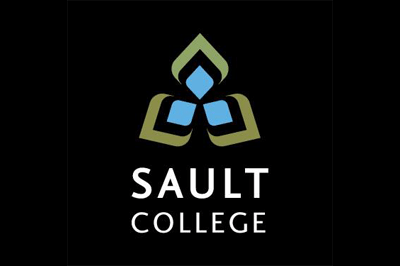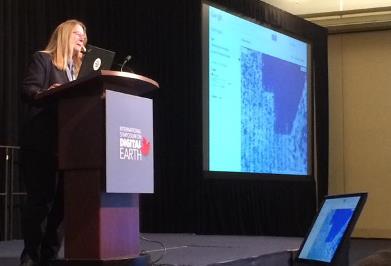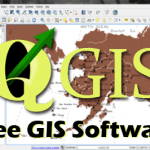the Geographic Information Systems Professional (GISP)
Over the past few years the term GISP (geographic information systems professional) has become pretty popular as more and more geospatial professionals look for a way to demonstrate that they have become more established in their geomatics careers. We originally published this article after applying for GISP certification ( after several years of putting it off and procrastinating) so we could document the process involved as a way to help others who have considered but not yet applied for certification.
Since then I have received my GISP certificate and there has been some major changes made to the GISP certification process by the GIS Certification Institute, so we have included details about the changes below the original article.
[We are always interested to hear from those that have applied for GISP so if you want to share anything about it then let us know. It is always a debatable topic in GIS themed social networking groups].
A GISP is a certification status awarded to a geographic information systems (GIS) professional who has met the minimum standards for ethical conduct and professional practice as established by the GIS Certification Institute (GISCI). Thousands of professionals in GIS & Geomatics (mostly in the US) have obtained certification and are currently making the most of it to help achieve career aspirations.
There are many benefits to obtaining a GISP
Employers have started recognizing GISP certification and some are starting to prefer (and sometimes require) professionals with GISP certification when they have a GIS position that needs to be filed. A recent survey done showed that employees who have certification on the average earn more than their counterparts who do not. Still, the geomatics sector needs to emphasis the importance of GIS certification much more before the real value of having a GISP becomes recognized by the geospatial community.
It is not just in the area of earnings and wages that having a GISP certification is beneficial.  Many certified professionals say that the process of getting themselves certified was extremely helpful. Some have even said that the certification helped them to not only advance their careers but to redefine it as well. They are rightfully proud of their accomplishment and feel that the certification will only continue to become more valuable as time goes by, as it is the most recognized certification for a person in the GIS field.
Many certified professionals say that the process of getting themselves certified was extremely helpful. Some have even said that the certification helped them to not only advance their careers but to redefine it as well. They are rightfully proud of their accomplishment and feel that the certification will only continue to become more valuable as time goes by, as it is the most recognized certification for a person in the GIS field.
To qualify for the GISP certification, you must meet certain benchmarks in your education and professional experience set forth by the GISCI, as well as various contributions to the profession.
The application itself is point-based; you will be given points for different and specific activities in the three categories under consideration. After you have gotten to the minimum point requirement and you have worked for at least four years in the GIS industry, you can then submit you application and start on the process to become a certified GIS Professional.
At first glance the Application may seem Intimidating
The first thing to do is download the application form from the GISCI website.  Your first glance at the application may be intimidating (as the GISCI application process can be rather lengthy and often confusing), however if you have any problems along the way, the GISCI are willing to help. Downloading the form is the simple part. You can either fill it electronically (with PDF version) or you can print it out and fill it out. I imported the application into a word document and typed all my information into it so that it looked more professional when it came time to print it.
Your first glance at the application may be intimidating (as the GISCI application process can be rather lengthy and often confusing), however if you have any problems along the way, the GISCI are willing to help. Downloading the form is the simple part. You can either fill it electronically (with PDF version) or you can print it out and fill it out. I imported the application into a word document and typed all my information into it so that it looked more professional when it came time to print it.
Next, read through the GISCI Code of Ethics & Rules of Conduct Acknowledgment Form, a document that explains the organization (and you as its certified professional) code of ethics and rules of conduct. It is mandatory to sign an acknowledgement form and include it with your application.
 The GISCI Procedures Manual should be your next stop, it takes you through the preparation for the application process systematically. There are great tips on the first couple of pages that will benefit you throughout the process. The rest of the document takes you through each component of the application. It is advisable to have your application on hand at the same time so that you can review both documents.
The GISCI Procedures Manual should be your next stop, it takes you through the preparation for the application process systematically. There are great tips on the first couple of pages that will benefit you throughout the process. The rest of the document takes you through each component of the application. It is advisable to have your application on hand at the same time so that you can review both documents.
The bulk of the work involved in filling out your application is gathering the necessary data. You will need to not just be able to answer, in detail, questions about your education, professional experience, and professional contributions but also to provide documentation that supports the information you included in the application. This was a challenging task for myself as I moved several times over my career and lost documents along the way.
I would recommend that people start scanning and saving copies of certificates, receipts, badge tags, etc. that can be used in the application as you get them and not wait till it comes time to apply. After sending in the application, we received digital confirmation that the application was received, and then about 4 to 5 months latter a GISP certificate and pin arrived in the mail.
After your certification as a GISP, you are required to re-certify every five years. All you need for the re-certification is too prove that you continued working in or participating in the field of GIS. The components are also similar to the original certification application component. They are; Course and Conference (the educational), Contributions to the Profession and Work Experience. Renewing your certification should be a walk in the park provided you have remained active in the geomatics industry.
GISP certification now requires a Technical Exam
 As of July 1, 2015, people applying for the GISP certification will be required to take and pass a GISCI Geospatial Core Technical Knowledge Exam, as well as meet all the current standards for certification via a portfolio based review based on ethics agreement, education, experience, and professional contributions.
As of July 1, 2015, people applying for the GISP certification will be required to take and pass a GISCI Geospatial Core Technical Knowledge Exam, as well as meet all the current standards for certification via a portfolio based review based on ethics agreement, education, experience, and professional contributions.
The new GISP certification process will incur a $ 100 application fee, $ 250 exam fee, and a $ 100 portfolio review fee and individuals will be certified for a 3 year period instead of 5 years. Annual renewal fees of $ 95 will be due on the anniversary of an individuals initial certification and be required to be paid in full prior to re-certification. All professionals that were GISP certified or recertified before July 1, 2015 will remain certified under the current 5 year policy and then begin the new 3-year renewal process after that. See GISCI.org for exact details on fees and procedures.
There are 342 registered GISPs in Canada
According to the GISP Registry on the
[A GISP is not the only recognized certification program in the GIS industry, the Canadian Institute of Geomatics & Esri both have certification programs as well].











Leave a Reply
Want to join the discussion?Feel free to contribute!